9 Native Irish Dog Breeds and Their Histories
From hounds to terriers, Ireland has gifted the world with several breeds that are native to the Emerald Isle. Some, like the Irish red setter and Kerry blue have grown widely popular outside of the island. Other breeds, like the Kerry beagle, are a rare national treasure.
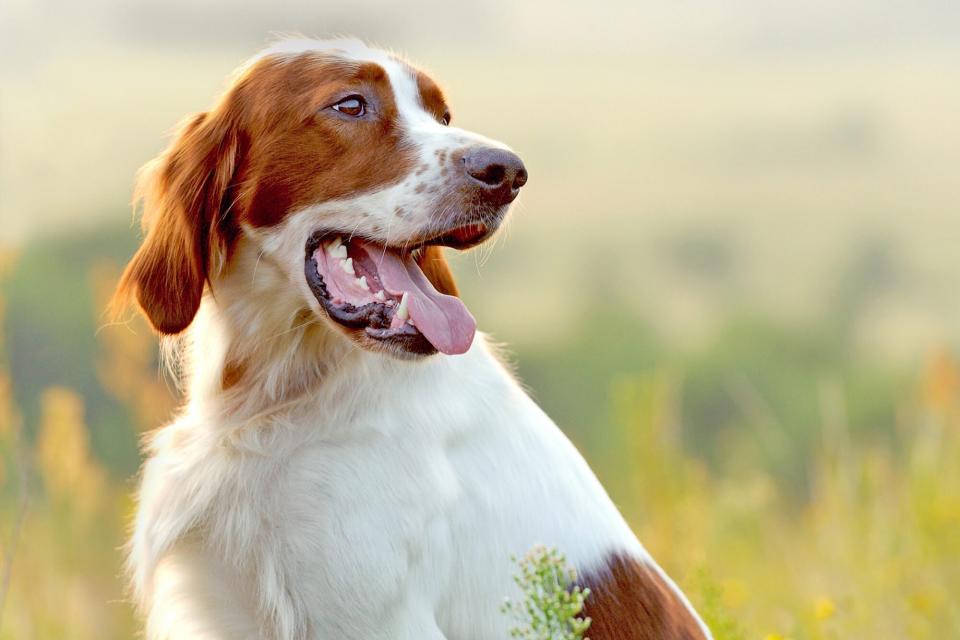
glenkar / Adobe Stock
For a purebred dog breed to be officially recognized in the United States, it does well to be registered through the American Kennel Club (AKC). Mari Beth O'Neill, Vice President of Sport Services at the AKC, shared the process of AKC certification with Daily Paws.
"We do a myriad of things, which includes assisting new breeds in becoming recognized," O'Neill says. "I also work with all of the parent clubs and their development of a breed standard—the standard of excellence of their breed."
O'Neill actually had a personal hand in helping register two of the most recent Irish breeds in the U.S.—the Irish Glen of Imaal terrier and the Irish red and white setter. These two breeds, along with seven others, make up the nine native Irish breeds that we know of today.
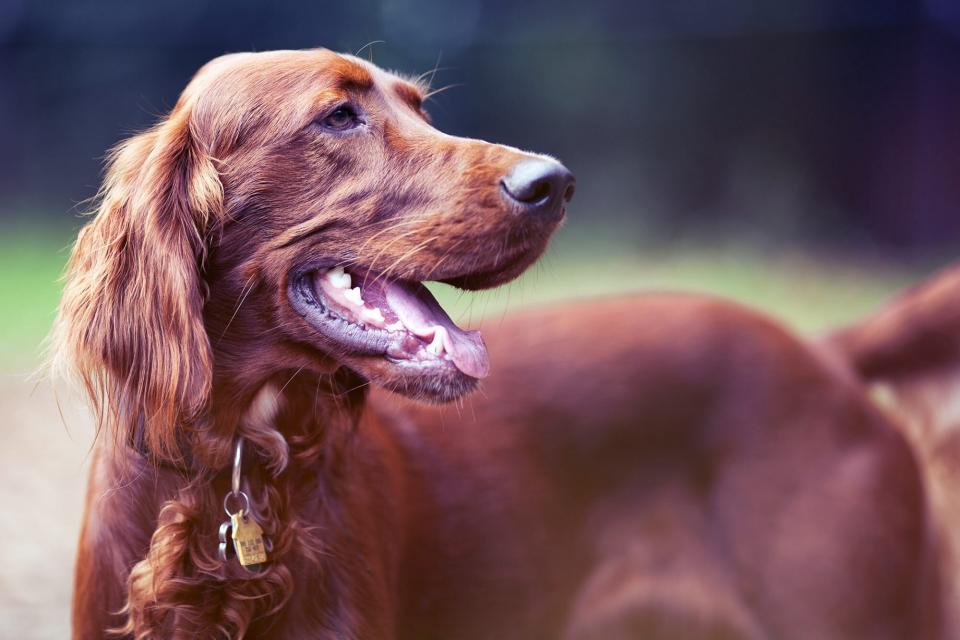
Moazzam Ali Brohi / Getty
Irish Setter
In the 18th century, the Irish setter—sometimes called the Irish red setter—was originally bred from the Irish red and white setter (more on that later) and to be a working dog that would help their owner hunt game.
To this day, they are still large, active dogs, requiring around two hours of exercise per day. That means Irish red setters are a great fit for families with big fenced-in yards and plenty of space to wander around indoors. In addition to physical activity, their majestic and fluffy auburn coat requires a good brush and groom more than once a week to keep shedding at bay.
Prospective owners will find an intelligent, friendly, and energetic friend in the Irish setter!
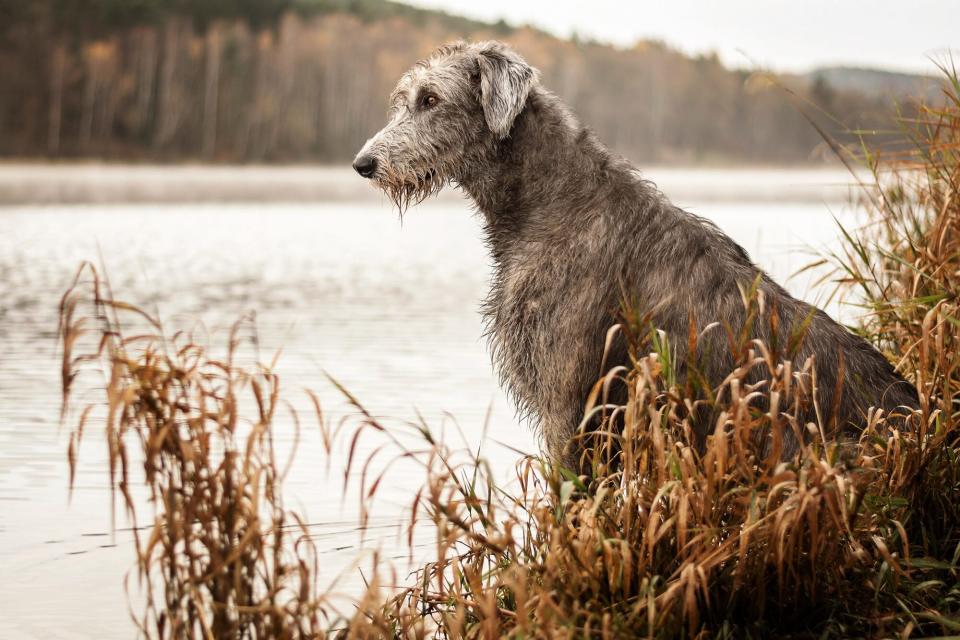
Kamila Veresova / Getty Irish wolfhounds love the great outdoors and a chance to explore and "hunt" is always appreciated.
Irish Wolfhound
Introducing your royal highness, the Irish wolfhound. OK, that may be a little dramatic, but this breed's history is rich with royalty, having been beloved by England's King Henry VIII and Queen Elizabeth I. So much so that these pups were gifted to friendly kingdoms.
And let's get one thing straight: these were no small gifts! The Irish wolfhound, in fact, is one of the largest breeds of dogs in the whole world, typically weighing between 105-180 pounds. Despite their enormous size, these dogs are anything but domineering, boasting gentle and playful temperaments.
RELATED: 11 of the Most Popular Hound Dog Breeds Both Big and Small
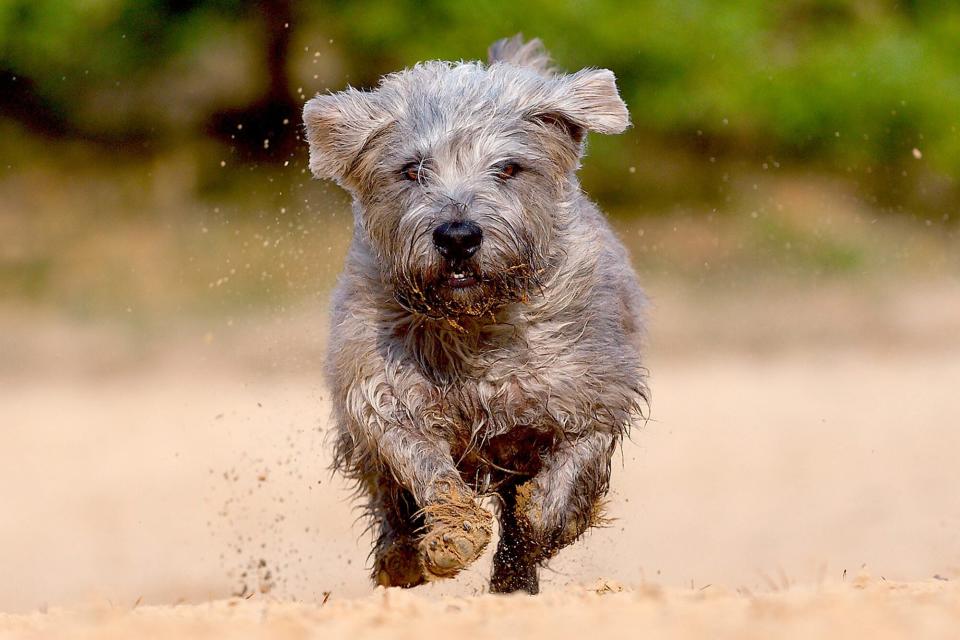
Hans Surfer / Getty These pups might have short legs, but that doesn't mean they don't like to stretch them. Your Glen of Imaal terrier will need a bit of exercise every day to stay happy.
Glen of Imaal Terrier
The Glen of Imaal terrier's origin story had some rough beginnings. As a terrier, the breed was largely unappreciated in the 16th and 17th centuries while its hunting friends (like the Irish setter, remember that red-headed beauty?) soaked up the limelight. However, the Glen adapted to tough conditions.
Over generations of hard work, the Irish Glen became a dependable, versatile companion, great to have around the farm and in the home.
"Of course, being a terrier, one of its functions was to help rid the premises of vermin, but also, they were used to turn the spit...when meat was being roasted over a fire," O'Neill says. Now that's a unique trait for a pup!
From helping with dinner to protecting loved ones, the Glen of Imaal terrier made a name for himself over the years, and it's easy to see why.

glenkar / Adobe Stock
Irish Red and White Setter
We're thrilled the Irish red and white setter is included on this list, because the incredible hunting dog almost didn't survive the early 20th century. The Irish Kennel Club says the pup was eclipsed in popularity by its offspring: the Irish setter. What a betrayal! (Or should we say "breed-trayal.")
This brief period of mild disappearance sparked an effort to revive the breed during the 1920s, and became reestablished again in the 1940s. Today, the red and white setter is bred primarily for hunting game in the field and is not often seen outside of Ireland. Still, this breed is intelligent and very friendly, traits these dogs have passed on to the Irish setter.
RELATED: 15 of the Smartest Dog Breeds
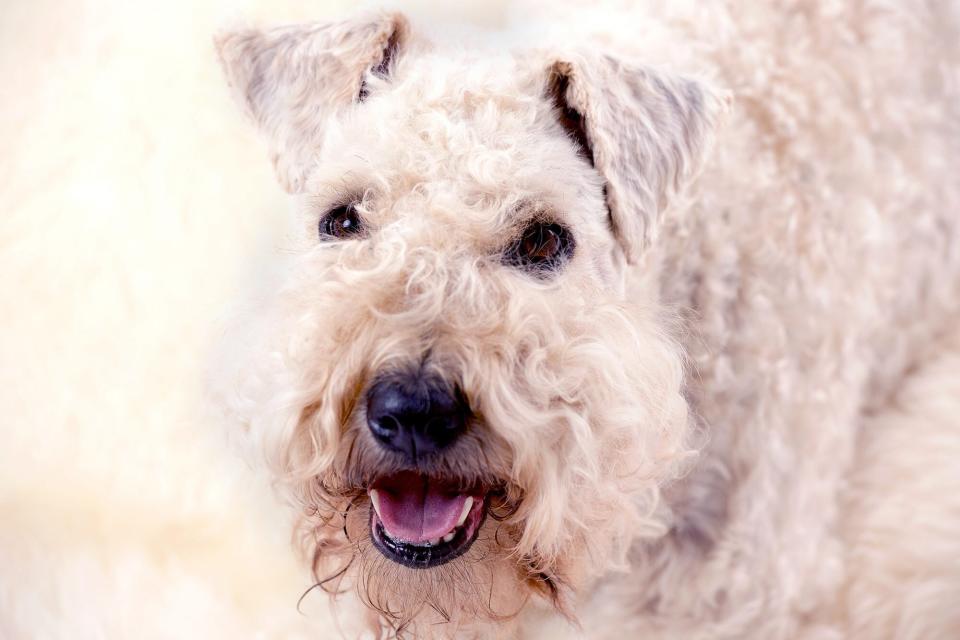
LottaVess / Getty
Soft-Coated Wheaten Terrier
The Irish have gifted us with three magnificent terriers, but none are known for their coat quite like the soft-coated wheaten terrier. Their existence has been documented for over 200 years, largely in textual references of "soft-coated dogs."
Just like their name suggests, the Irish soft-coated wheaten terrier is in fact soft. No false advertising around these parts. Although their fluffy white coat requires a daily brush, they are fairly infrequent shedders, which is good news for owners looking for a more low-allergen dog.
And if the breed "wheaten" sounds familiar, it might be because you've seen Ocean's 8, starring Sandra Bullock. And after reading up on these friendly, loyal terriers, you may want to join a fan club yourself!
RELATED: Binge-Worthy Pet Movies and TV Shows
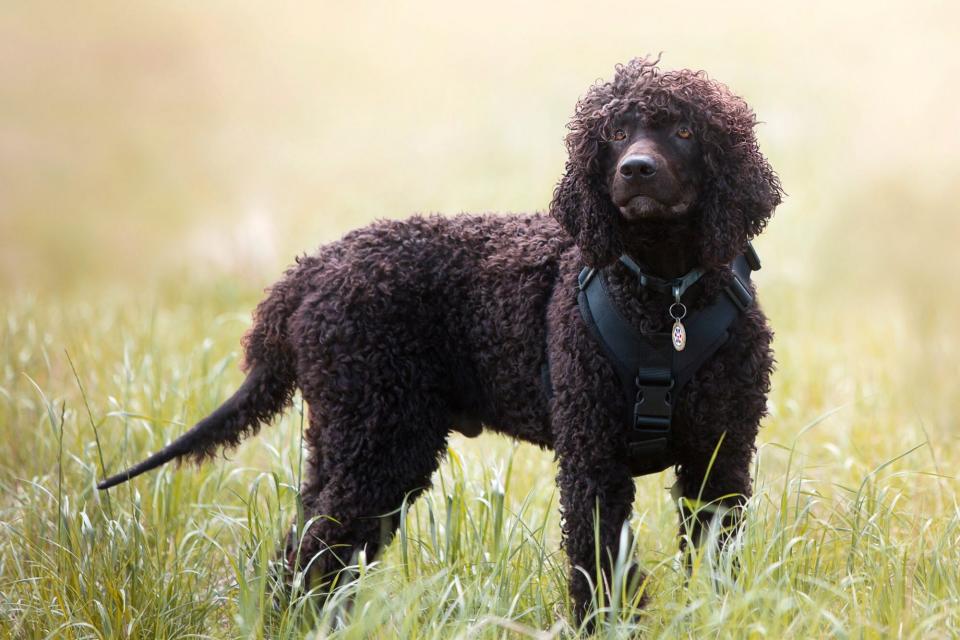
Julie Morrish / Shutterstock With their curly brown locks, Irish water spaniels are often confused for poodles.
Irish Water Spaniel
In addition to its old Irish origin (like, way back in the 1100s), the Irish water spaniel has been well-known in the United States for decades. No, scratch that. Centuries! In fact, the AKC says the Irish water spaniel was one of the first nine breeds to be registered with the AKC, in the year 1878. This dog is historically a great swimmer and fun-loving pet.
"The Irish are known to be somewhat gregarious and fun-loving, most of these [Irish] breeds have some of that," O'Neill said. "Everything from even clown-like behavior at times from the Irish water spaniel."
RELATED: 150 Funny Dog Names for Your Hilarious Pet
In addition to serving as a poolside friend and apparent comedian, Irish water spaniels are good pets for allergy sufferers due to their low-allergen coat. Just make sure their dark curly coat gets a weekly brush and regular grooming by someone who is familiar with the breed.

Kseniia Kolesnikova / Shutterstock A lot of work goes into keeping a Kerry blue's stunning profile. Along with visiting a groomer every six to eight weeks, you'll need to brush their hair every few days.
Kerry Blue Terrier
Because of their sharp appearance, the Kerry blue terrier rose to popularity as an icon for Irish independence and patriotism.
Named for its Irish roots and coat color, this dog isn't actually born blue. In fact, this terrier is born with black fur and a coat-fading dominant gene that turns the fur into the colors that fans of the breed love to admire. The end result can vary from charcoal to light blue-grey.
The Kerry blue's beautiful coat doesn't shed, so you'll want to give this pooch a good brush 2-3 times a week to avoid matted fur.
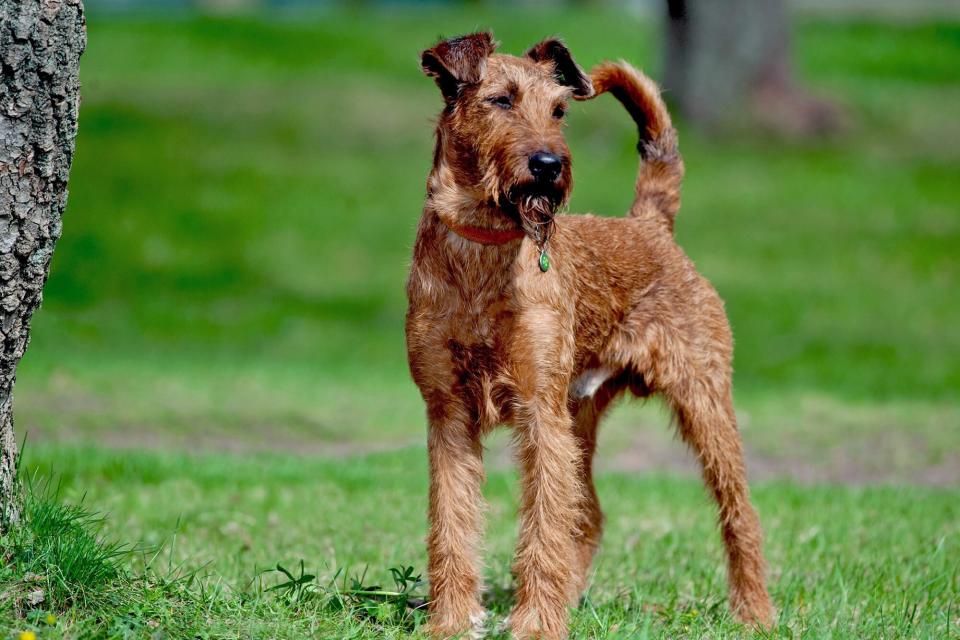
Olga Itina / Adobe Stock Irish terrier dogs are intelligent, eager-to-please pups who adore their owners—especially when given treats.
Irish Terrier
The Irish terrier's red coat is one that's been enthusiastically embraced by dog lovers in the United States for years. Their great reputation was further "enhanced" when they earned a very important job as messengers during World War I. That's right—these heroic dogs weaved to-and-fro through battles in order to deliver important communications to their rightful spot.
The Irish Kennel Club describes the terrier as "fierce when the circumstances call for it," but also that he's easy to train and even gentle-hearted. The IKC also touts an early description of the Irish terrier as "the poor man's sentinel, the farmer's friend, and the gentleman's favourite."
One thing's for sure: you've got a brave friend in this loyal terrier.
Kerry Beagle
The Kerry beagle, while one of the most ancient Irish breeds, is incredibly rare. And as a matter of fact, the breed is not related to our friend the beagle. How can you tell, you might ask?
Well, the Kerry beagle tends to be of a tannish brown or black color instead of the tri-color pattern the beagle sports. Additionally, the Kerry beagle is a slightly larger breed, tending to weigh in at around 50-60 pounds.
While you may not spot this breed around your neighborhood save for once in a blue moon, this breed is a well-known hunting companion for small game in its country of origin, which makes sense for a descendent of the legendary Celtic hound. Hounds like to hunt!
A Celebration of Irish Dog Breeds
Though these breeds originated in Ireland, most are very well-known outside of Irish borders due to dog shows and, you guessed it, St. Patrick's Day.
"AKC is, every year, thrilled to celebrate the Irish breeds with the upcoming celebration of St. Patrick's Day," O'Neill said. "Annually, we highlight those breeds on our website, and in many instances are thrilled to see these breeds in St. Patrick's parades around the country."
From fun-loving, to loyal and hard-working, there's an Irish dog breed for everyone.

